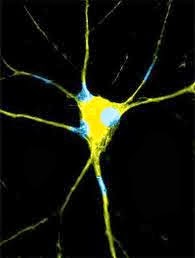 Scientists have found that aptly named extremely long-lived proteins (ELLPs) in the brains of rats can persist for more than one year—a result that suggests the proteins, also found in human brains, last an entire lifetime. Most proteins only last a day or two before being recycled. The researchers reported their findings in January 2012 issue of Science.
Scientists have found that aptly named extremely long-lived proteins (ELLPs) in the brains of rats can persist for more than one year—a result that suggests the proteins, also found in human brains, last an entire lifetime. Most proteins only last a day or two before being recycled. The researchers reported their findings in January 2012 issue of Science.
A team at the Scripps Research Institute and Salk Institute for Biological Studies made the discovery while studying ELLPs that are part of the nuclear pore complex (NPC), which is a transport channel that regulates the flow of molecules into or out of the nucleus in neurons.
To support the hypothesis, researchers performed pulse chase labeling of the wole rats with stable isotope 15N followed by mass spectrometry to monitor global protein turnover on a timescale of year, as the average life span of a lab rat is 2 years. After the combination of diet including 15N and 14N, rats were sacrificed and tissue from brain and liver were harvested. Nuclei from liver and brain were purified, digested and analyzed by MudPIT (multidimensional protein identification technology) LCLC-MS/MS (multidimensional liquid chromatography –tanden mass spectroscopy). Researchers identified 3,400 fully 15N proteins (20,754 peptides) and only 9, 14N proteins (14peptides).
Detailed analysis of 15N spectral counts and 15N/14N MS1 ratios revealed that in contrast to the stable scaffold, the peripheral Nups and components of the central transport channel were devoid of heavy peptides, suggesting they were completely replaced after 6 months (Fig. 1C). Thus, unlike other large protein complexes, such as the proteasome or ribosome, in which all components have similar turn-over values (1, 2), the individual components of NPCs have very different lifetimes. This supports the idea that NPCs are built to last the entire lifespan of the cell and are not completely removed and assembled anew in post-mitotic cells. Rather, NPC maintenance in non-dividing cells relies on the non- or extremely slow- exchange of scaffold and rapid replacement of peripheral Nups.
Because the persistent ELLPs are more likely to accumulate molecular damage, NPC function may eventually become compromised, allowing more toxins into the nucleus. This could result in alterations to DNA, subsequent changes in gene activity, and signs of cellular aging. “Most cells, but not neurons, combat functional deterioration of their protein components through the process of protein turnover, in which the potentially impaired parts of the proteins are replaced with new functional copies,” said senior author Martin Hetzer, of Salk’s Molecular and Cell Biology Laboratory, in a statement. “Our results also suggest that nuclear pore deterioration might be a general aging mechanism leading to age-related defects in nuclear function, such as the loss of youthful gene expression programs.”
A lack of protein turnover exposes the proteome to an increased risk of aberrant chemical modification and oxidative damage during aging. In addition to aging, the results may provide key clues to the development of neurodegenerative disorders like Alzheimer’s and Parkinson’s diseases.
![]()
Savas, J., Toyama, B., Xu, T., Yates, J., & Hetzer, M. (2012). Extremely Long-Lived Nuclear Pore Proteins in the Rat Brain Science, 335 (6071), 942-942 DOI: 10.1126/science.1217421